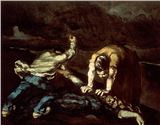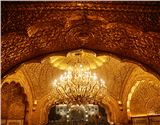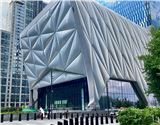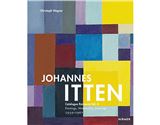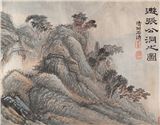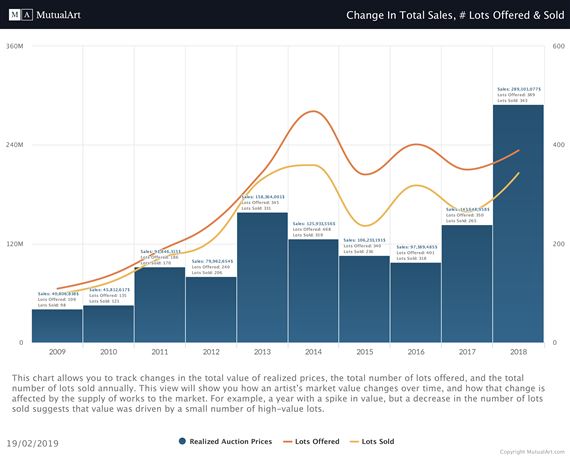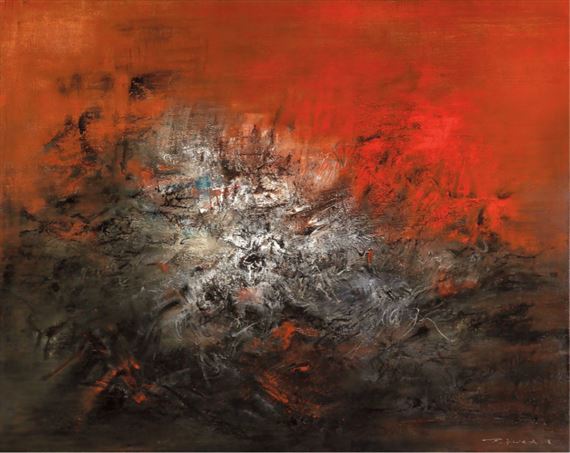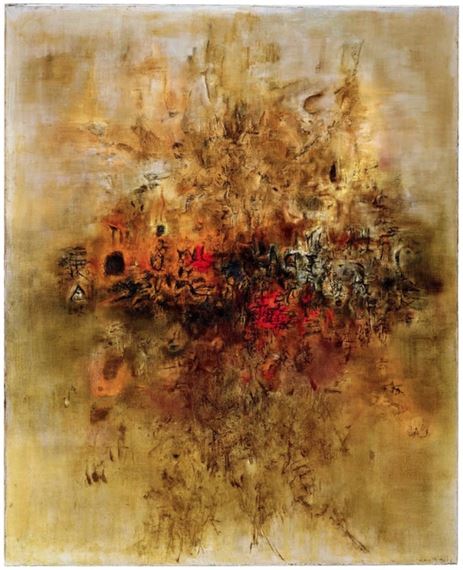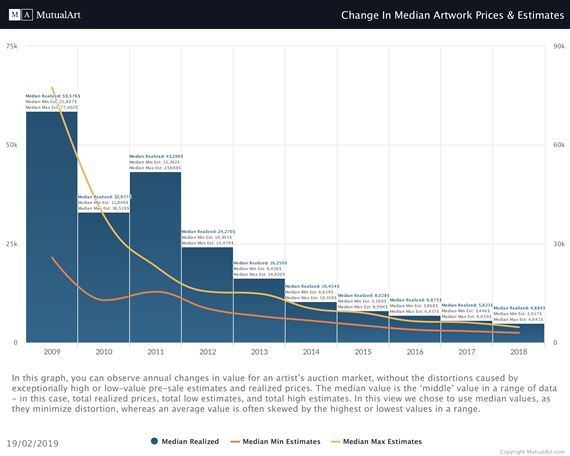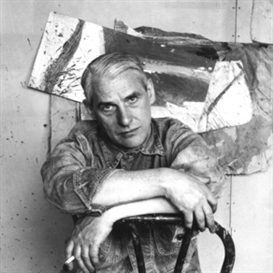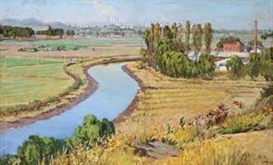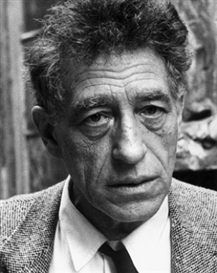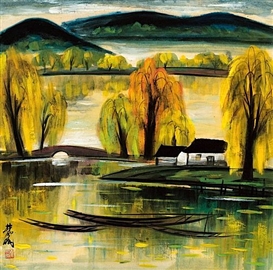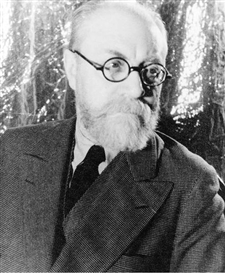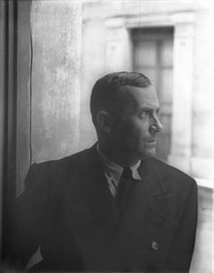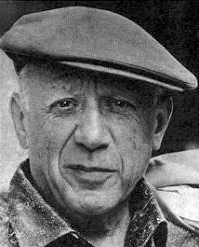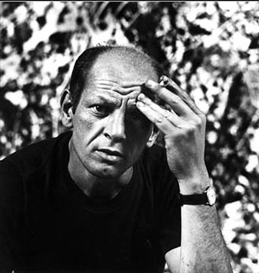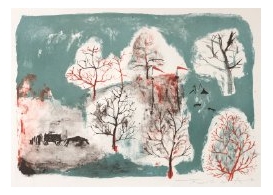'No Limits': How 2019 Could be a Defining Year for Zao Wou-Ki
2018 was hailed as the year that French-Chinese artist Zao Wou-Ki joined the highest echelons of the art market, but can he sustain a position alongside de Kooning and Pollock?
Adam Heardman / MutualArt
Feb 21, 2019
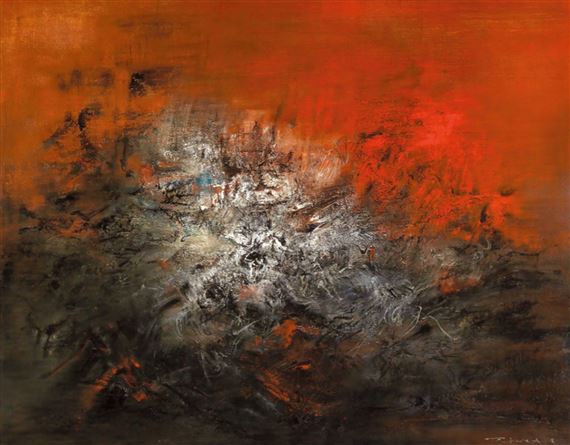
2018 was hailed as the year that French-Chinese artist Zao Wou-Ki joined the highest echelons of the art market, but can he sustain a position alongside de Kooning and Pollock? Here’s your guide to an art market favorite who bridges the divide between Eastern and Western traditions.
Didier Gicquel, Portrait of Zao Wou-Ki
By the time Zao Wou-Ki passed away in 2013, at 92 years old, he had already garnered a reputation as one of the foremost abstract painters of the contemporary age. He was also regarded as something of a bridge-builder.
His friendship and creative cross-pollination with artists like Alberto Giacometti and Joan Miró linked the post-modern heyday to the present, just as his recasting of traditional Chinese landscape art through the crucible of the European avant-garde continues to link Eastern and Western art history.
Wou-Ki, whose name roughly and aptly translates into English as 'No Limits', was born in Beijing in 1921. He studied from a very early age at the Hangzhou School of Fine Arts, where he was taught by Fang Ganmin and Lin Fengiman, both of whom are now regarded as pioneers of modern Chinese art. Wou-Ki held his first solo exhibition in Chongqing at the age of 21. In 1948, when he was 29 years old, he and his partner moved to Paris.
For Wou-Ki, this was a significant step, throwing him into the hotbed of avant-garde art. He was devoted to the works of Picasso and Matisse and began to be even more influenced by abstract expressionism. His work moved away from its debt to Shang-dynasty, ‘bone script’ petroglyphs, and eventually left figuration far behind, instead exploring vast and cosmic color fields, gestures and spaces.
Zao Wou-Ki, Juin-Octobre (1985), which sold for $65.2 M in 2018, breaking several records
On September 30th, 2018, Wou-Ki’s monumental abstract triptych, Juin-Octobre (1985), sold for $65,197,340 during a Modern Art Evening Sale at Sotheby’s Hong Kong. It thus became the most expensive single work by an Asian painter ever sold, and the most expensive work ever sold at auction in Hong Kong.
Juin-Octobre, Wou-Ki’s largest ever work, mirrors the linear-temporal nature of its own title by stretching and elongating in form, almost like a narrative tapestry or a timeline. This geometry of time is offset by the whorls and swirls of color, looking like nebulae or shelves of stars in the spiral arms of galaxies. The painting showcases Wou-Ki’s signature way of applying oil-paint to obtain an inky, watercolor effect, the result of years of experimentation in hopes to depict the cosmos. The painting is a potent meditation on the spiritual and intangible nature of human experience within the self-imposed structures of linear time. It can perhaps be considered the artist’s masterpiece.
Though Wou-Ki has long been an auction house favorite, this sale was heralded as a watershed moment which could see him join the very highest echelons of the secondary market. When the offer of Juin-Octobre at auction was announced, Vinci Chang, Sotheby’s Head of Modern Asian Art, claimed that “Zao’s paintings are held in the same regard as those of Western masters”.
The $65 million price tag does indeed seem to suggest that Wou-Ki can begin to be considered alongside Willem de Kooning, Mark Rothko, and Jackson Pollock at the very high end of the Post-War and Contemporary market.
2018 was by far Zao Wou-Ki’s highest performing by total sale value in the last ten years. Even without the headline-grabbing sale of Juin-Octobre, his total still would have broken the $200 million mark. His previous year-high came in 2013 with $158,364,00 raised.
The data shows a fluctuating but comparable number of offered and sold lots in the last five years, but a large increase in total realized price. Interestingly, 2016 saw 318 works by Zao Wou-Ki offered at auction and delivered a total sold value of $97 million. In 2018, a relatively similar number of sold lots (364) delivered a total nearly three times as high. In 2014, more lots were sold than in 2018, but the total value was significantly lower.
Zao Wou-Ki, 14.12.59 (1959)
This could signal an overall increase in valuation of Wou-Ki works, or a proportionally higher number of significant and expensive works coming to auction. Several other notable sales alongside Juin-Octobre contributed to the artist’s record year. Et la terre était sans forme (1956-7) sold for $23 million in March and 14.12.59 (1959) sold for $22.5 million in May. Indeed, 6 of Zao Wou-Ki’s top 10 highest earning sales came during 2018.
There is evidence that buyer enthusiasm during the year drove the prices up. In May, Christie's Hong Kong set a new house-record for a Contemporary Evening Sale, raising $132,614,678 from fine art sales. The total was driven primarily by Wou-Ki works selling above estimate.
Lee Bingle, Christie's Corporate Communications Manager in Asia, recalls: "The atmosphere in the sale room was intense, with prolonged spirited bidding on the phones and in person, with buyer participation from across the world. The sales total was in no small part made possible by the success of Zao's works, many of which went well over low estimates."
Zao Wou-Ki, Et la terre était sans forme (1956-7)
Other factors should be taken into account, here, however. The fact that the consignor on the Juin-Octobre sale made a 2735% return on the price he paid for the painting in 2005 should give some idea of the changing valuation of Wou-Ki’s work, but is this anomalous?
Another way of analyzing Zao Wou-Ki’s performance in 2018 in comparison to previous years is to look at the median value of works and estimates. The figures here show a sharp and pretty much continual decline in the median value of total sales, low and high estimates.
In Wou-Ki’s case, this seemingly worrying trend can perhaps be illuminated by one important factor. As the market for his paintings booms and their prices and estimates swell, there has been a simultaneous flood of his very low-priced ceramics and lithographs being offered and sold. With his market increasingly split between blue-chip oil paintings and $394 silkscreens, the median result is more likely to fall. Whilst collectors will want to keep the diminishing median value in mind, it doesn’t necessarily indicate a decline in the artist’s overall market.
As Zao Wou-Ki’s market begins what will be a defining year in 2019, those interested can look forward to February 27th’s sale of a collection of lithographs at Christie’s New York as an early barometer. The high estimate stands at $25,000. What’s certain, however, is that Zao Wou-Ki will continue to enjoy an active and thriving presence at auction.
Though Bingle admits that Christie's expect 2019 to be a "somewhat softer" year for his works, he is confident that the artist's "international recognition and appeal has never been higher", and he expects this to continue rising.
"Zao Wou-ki is one of the indisputable masters of Asian 20th Century Art and epitomises the Chinese modern art movement," says Bingle. "His works demonstrate how he combined western expressionist techniques with innovative art movements of the time. This reinterpretation of the aesthetic value of traditional Chinese art infused with a modern spirit has broken down cultural barriers and continues to elevate him."
Whether 2018 proves to be an anomaly or a stepping-stone for Zao Wou-Ki, he will remain a painter of profound art-historical significance and robust market strength.
For more on auctions, exhibitions, and current trends, visit our Articles Page


